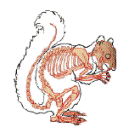
Ben Chaplin in The Truth About Cats & Dogs (dir. Michael Lehmann, 1996).

Janeane Garafolo and Lisa Marie Russell.

Ben Chaplin and Uma Thurman (in medieval saint's pose).
Upon watching The Truth About Cats & Dogs, my left brain automatically sets up a right-hand column of cons in opposition to the left-hand column of pros set up by my right brain, and neither ever emerges as the dominant column. There are some premises that are hard to get past, the most unbuyable being that a guy falls in love with a gal on the basis of her radio personality, then can't recognize her voice when talking to her in person. There's also the cop-out around the issue of beauty: Janeane Garafolo's character Abby is presented as a plain jane (or at least she perceives herself that way), but there's no getting around the fact that Garafolo is hot. The point is supposed to be that she overcomes her own insecurities, etc. etc. But what if Abby were actually homely? How would that affect the reaction of the male lead upon finding out that she's not actually Uma Thurman? The message seems to be that physical beauty is unimportant--as long as you've got some on reserve.
There are also some unsatisfyingly unresolved plot strands. What happens to Uma Thurman's asshole boyfriend? She realizes he's a loser at one point, but we never get to see his dismissal. He's set up as such an ogre that it seems unfair to deprive us of a comeuppance scene. Jamie Foxx is given almost nothing to do--a big waste. And maybe I blinked and missed it, but what was the job Garafolo sets Thurman up for at her station towards the end of the movie? The way the scene plays, it seems like we're supposed to wonder what's written on the little slip of paper Garafolo hands Thurman, as though it's going to be a big funny surprise when we find out. But nothing.
On the other hand, there's something interesting in nearly every scene (well, maybe every other scene). How many Hollywood romantic comedies are there where one of the couple reads Roland Barthes to the other as a prelude to phone sex? And the scene where Ben Chaplin feeds Thurman cheesecake is both funny and grotesquely erotic. The relationship between Garafolo and Thurman is the other, perhaps more believable love story in the film (though of course this remains at a commercially safe level). Same-gender friendship is, I suggest, the key component of the "chick flick," or its flip side, the "dick flick" if you will, which usually involves some guy trying to get laid, receiving extended counsel from his male cohort, and/but inevitably finding out he really wants intimacy. This is Lehmann's metier, on both counts: he directed last year's Because I Said So with Diane Keaton and Mandy Moore, as well as 2002's 40 Days and 40 Nights (perhaps the purest example ever of how dick flicks are actually chick flicks in drag) and 1994's Airheads. Most notably, he directed Heathers (1989), which hinted at a future career of dark satire and trenchant cultural critique. But like I said, Airheads.



3 comments:
Was Airheads any good? I gave up on Lehmann around Hudson Hawk.. I may be one of twenty people who saw Meet the Applegates.
I'll let you know in a few days.
Oddest thing about Airheads is that the song the band is trying to get on the radio is actually a Reagan Youth song. The thought of Fraser, Buscemi, and Sandler getting together to cover some NYHC still makes me smile. It actually seemed kind of poignant back in '94 that a band had to take hostages to get a song like that on the radio, but of course the film doesn't actually acknowledge the debt.
Post a Comment